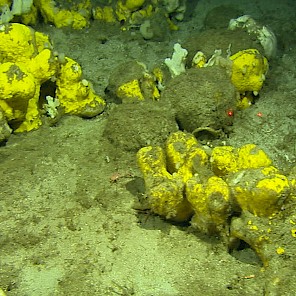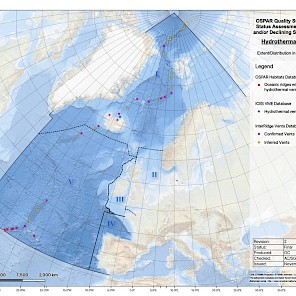| | | This week we are looking at some of the deep sea habitats on OSPAR's list of threatened and/or declining species and habitats. Our latest assessments of deep sea sponge aggregations, oceanic ridges with hydrothermal vents, seamounts, and carbonate mounds have just been published as part of our next holistic assessment of the status of the marine environment of the North-East Atlantic. |  | | Deep sea sponge aggregations | Deep-sea sponge aggregations are assessed as being in poor condition in Arctic Waters (Region I), Greater North Sea (Region II), Celtic Seas (Region III), bay of Biscay and the Iberian Coast (Region VI) and the Wider Atlantic (Region V) on account of their high vulnerability to, and slow recovery from, fishing impacts, which continue to occur throughout the habitat range. Knowledge on their distribution, extent, and condition has increased since the last assessment. |  READ MORE
READ MORE |
| |  | | Oceanic ridges with hydrothermal vents | Oceanic ridges with hydrothermal vents are assessed as being in good status, but low confidence is placed overall on the assessment. Any trends in status associated with climate change and ocean acidification are unknown, and future plans to explore and exploit vents for deep-seabed minerals are of concern. In order to improve or maintain the good status, conservation measures for deep-sea hydrothermal vents are necessary to protect these important but rare, sensitive, island-like ecosystems with unique biotic and abiotic features. |  READ MORE
READ MORE |
|
| |
| | |
|